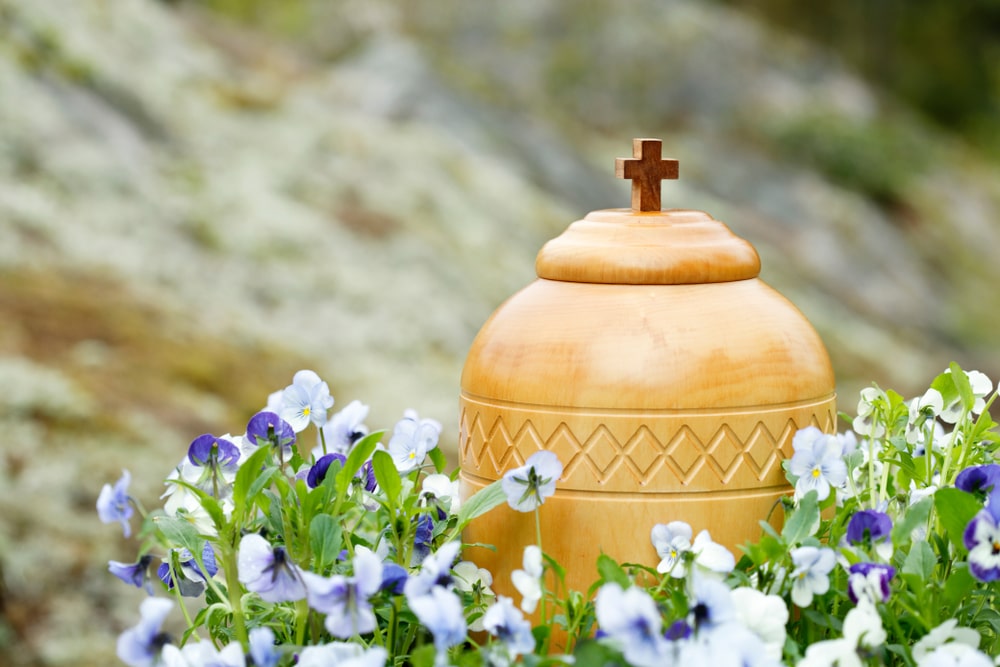Planning ahead for your funeral wishes is a thoughtful, forward-thinking gift for your family. With your wishes in hand, your family can confidently make decisions about your final tribute and never wonder if they did the right thing. But what details do you need to plan out? We’ve got a checklist below that will ensure you don’t miss any of the details as you put your wishes in writing.

Let’s quickly review each portion of the checklist, so you understand why each piece matters to your complete funeral plan.
Download a PDF version of the checklist here »»» Funeral Planning Checklist.
Choose the type of disposition
First, you will need to select your final disposition preference. This simply means, “What do you want to happen to your body after death?” The main options to choose from are:
- Traditional burial
- Cremation
- Green burial (eco-friendly)
- Anatomical donation (ending in cremation)

Choose the type of gathering, service, ceremony, or memorial service
It’s important for family and friends to come together to honor and celebrate your life. After all, they love you, and you’re important to them. Also, remembrance is a key part of the grieving process, so even if it’s just a small gathering, it’s necessary to do something. Here are a few options to consider as you outline your wishes:
- Visitation, viewing, wake, or rosary
- Do you want a private family viewing or public viewing?
- Do you want a wake at home or a visitation at the funeral home?
- Traditional funeral service
- Do you want the body present or not?
- Do you want the casket open or closed?
- Graveside service or a service at the crematory
- Memorial service (takes place after burial or cremation)
- Home funeral service and/or burial
- Green or eco-friendly funeral service
- Scattering ceremony
- Family gathering
- Reception or fellowship meal

Choose options to personalize your event
For a final tribute to be meaningful, it must be personalized. Thankfully, there are countless ways to add special touches to the service that will reflect your life and personality. Below, you will find a few options to consider, but if none feel right, feel free to come up with your own ideas. The possibilities are endless.
- Location that reflects the person’s interests, such as a park, golf course, garden, beach, event center, theater, art gallery, church, or stadium. For outdoor locations, choose an alternate location in case of inclement weather.
- Speaker, such as a clergy member or funeral celebrant
- Pallbearers, eulogist, assistants, and attendees
- Catered or potluck meal
- Prayers, poems, or other readings
- Songs or hymns, live or recorded
- Memorial video set to special music
- Monument, memorial, or virtual memorials, such as a grave marker, headstone, or online memorial website
- Memorial contributions to charity organizations
Choose the place of final rest
Whether you select burial or cremation, it’s a good idea to select a place of final rest. With burial, a cemetery must be chosen. However, with cremation, you should also come up with a long-term plan for the cremated remains. This could mean scattering, placement in a columbarium, urn burial, or something more unique (click here for additional options). The urn can be kept at home for a while, but to ensure care in perpetuity, it’s best to select a final resting place.
- Burial in a private cemetery, veterans cemetery, or on private property
- Scattering of cremated body at sea, in a park, on private property, or in a memorial garden (with permission of local municipality)
- Keepsake jewelry, such as cremation jewelry
- Organ donation or anatomical donation

Choose a method of payment
If you’ve chosen to prearrange your funeral wishes, you can also take care of the financial side of things at the same time. The most common payment options when paying ahead of time are a prepaid funeral insurance policy, a funeral trust, or a final expense plan.
If you are paying for services at the time of need (just following a loss), you can pay with a credit card, take out a loan, use savings, pay up front and use life insurance funds to reimburse yourself, or set up a crowdfunding page to help with expenses.

Choose a way to record your final wishes
The most important step is to actually record your preferences and wishes. It won’t do your family any good if they don’t know what you’re thinking. You can communicate your wishes in several ways.
- Contact a funeral provider to help you create a plan that ensures your wishes will be followed
- Complete a funeral planning guide
- Verbally share your final wishes (but do not rely solely on verbal instructions, as loved ones may forget or disagree on what you said you wanted!)
- Put your wishes in a voice or video recording

Additional assistance for your loved ones
If you’d like to go the extra mile in ensuring that everything is taken care of and your loved ones will know exactly what to do following your passing, you can take care of a few extra tasks.
- Collect important documents and notify your next of kin about where they are held
- Store a copy of your will, marriage and birth certificates, veteran’s discharge papers, military service records, life and health insurance policies, social security information, and other estate planning documents where your next of kin can easily find them
- Write your own obituary or gather important biographical information for your obituary
- Keep a copy of your funeral plans on file with a funeral provider and notify at least two other emergency contacts of where your funeral will be held and where your final wishes are recorded
With all these details in place and written down, you will make a time of loss much easier for your family. Rather than scrambling to plan a funeral and find all the important legal documents, they can rest easy because they have your checklist. You’ve already taken care of everything, and they just need to support each other and come together as a family to honor your life.





